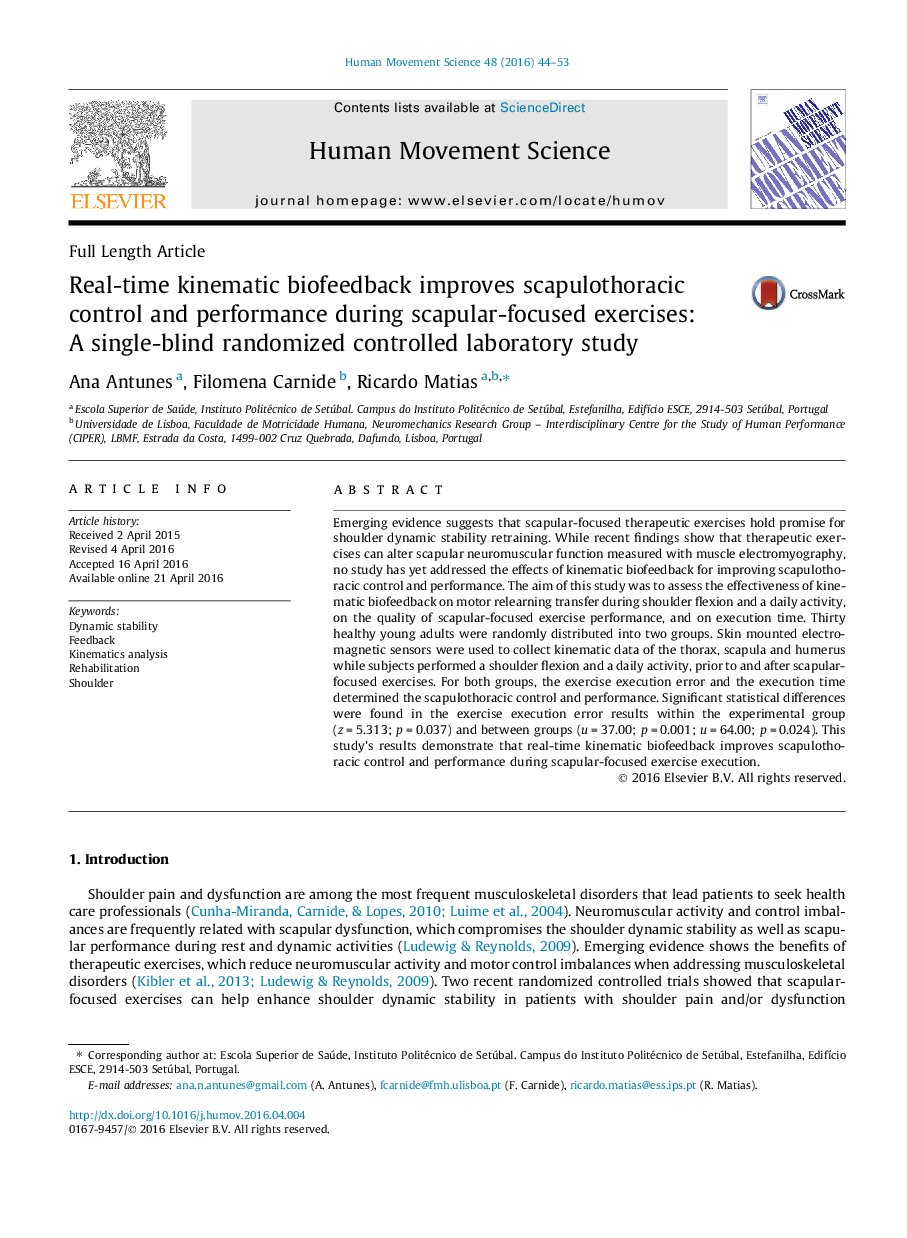| کد مقاله | کد نشریه | سال انتشار | مقاله انگلیسی | نسخه تمام متن |
|---|---|---|---|---|
| 928184 | 1474217 | 2016 | 10 صفحه PDF | دانلود رایگان |
• Kinematic biofeedback seems to contribute to scapular control and performance.
• Immediate changes were found in ST control when the difficulty of the task increased.
• Scapular-focused exercises should be considered during shoulder stability retraining.
Emerging evidence suggests that scapular-focused therapeutic exercises hold promise for shoulder dynamic stability retraining. While recent findings show that therapeutic exercises can alter scapular neuromuscular function measured with muscle electromyography, no study has yet addressed the effects of kinematic biofeedback for improving scapulothoracic control and performance. The aim of this study was to assess the effectiveness of kinematic biofeedback on motor relearning transfer during shoulder flexion and a daily activity, on the quality of scapular-focused exercise performance, and on execution time. Thirty healthy young adults were randomly distributed into two groups. Skin mounted electromagnetic sensors were used to collect kinematic data of the thorax, scapula and humerus while subjects performed a shoulder flexion and a daily activity, prior to and after scapular-focused exercises. For both groups, the exercise execution error and the execution time determined the scapulothoracic control and performance. Significant statistical differences were found in the exercise execution error results within the experimental group (z = 5.313; p = 0.037) and between groups (u = 37.00; p = 0.001; u = 64.00; p = 0.024). This study’s results demonstrate that real-time kinematic biofeedback improves scapulothoracic control and performance during scapular-focused exercise execution.
Journal: Human Movement Science - Volume 48, August 2016, Pages 44–53
